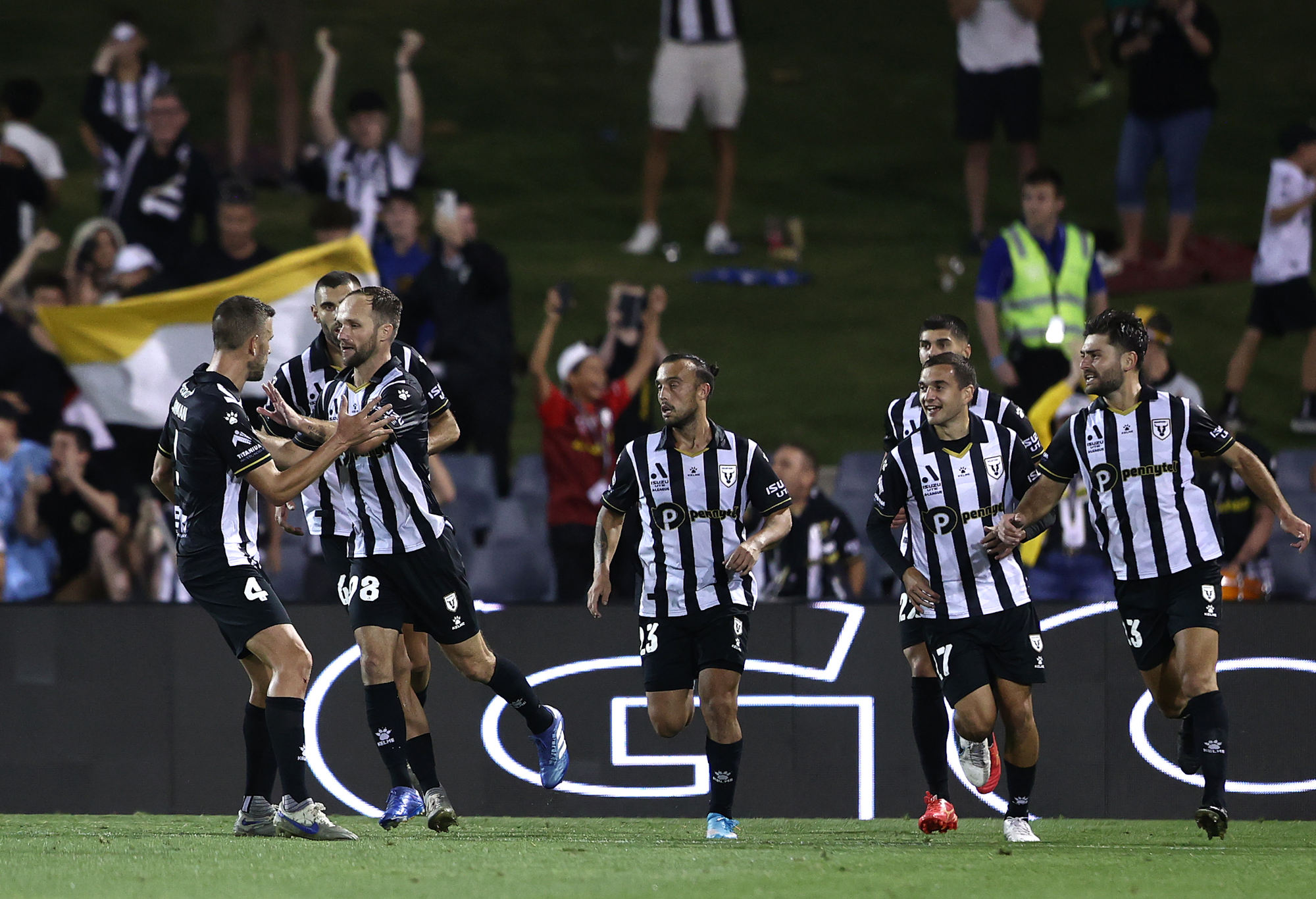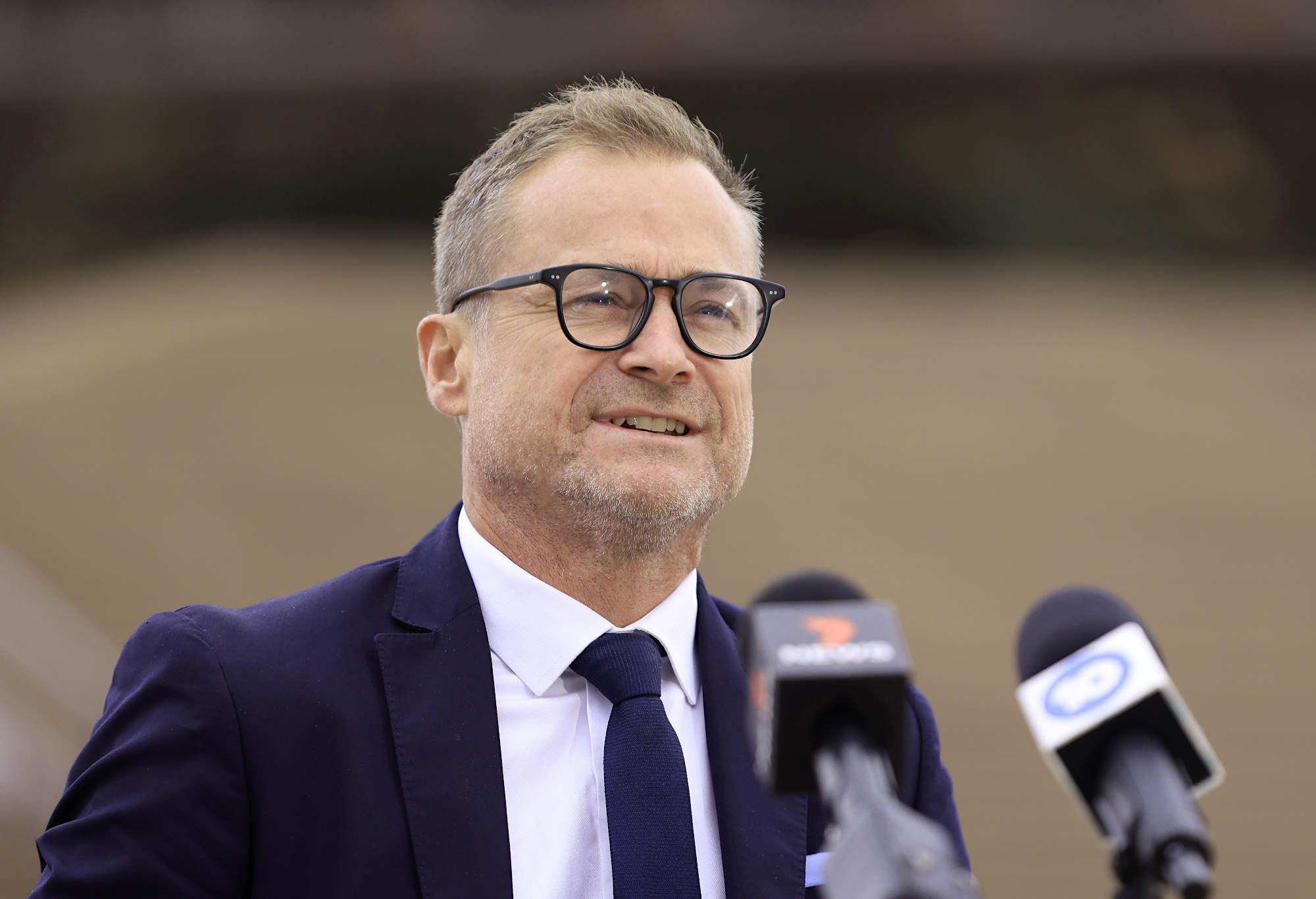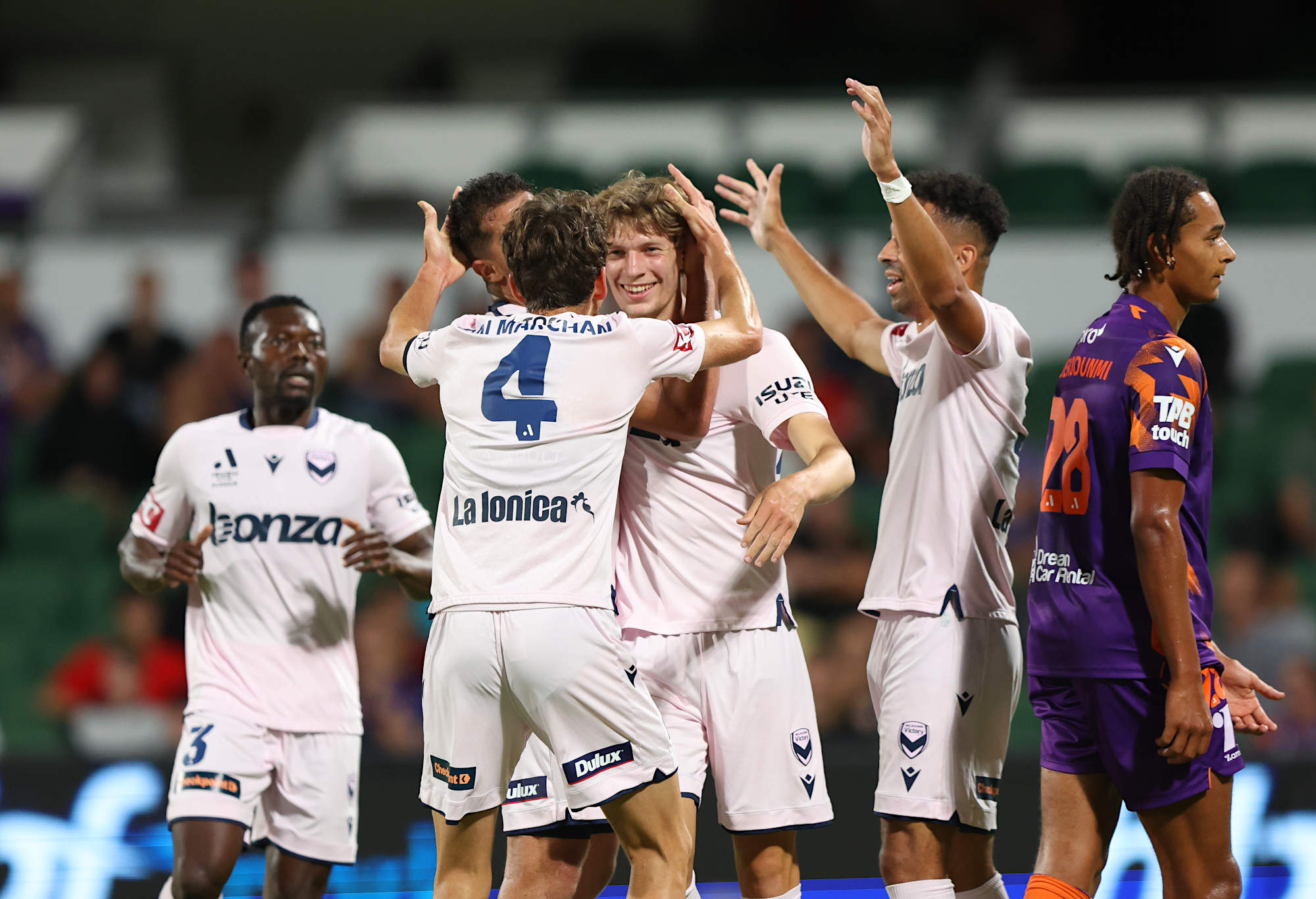FA introduces key VAR change for A-Leagues finals
Football Australia has announced a landmark move with the upcoming A-Leagues finals campaign to feature the use of live VAR to improve the fans'…
Everything was going fairly well.
During the tail end of 2023, A-Leagues fans were basking in a graceful period of little off-field turmoil and an absence of melodramatic disruptions.
Coinciding with this new-found peace was an uptick in metrics. The A-League Men (ALM) experienced a humble trajectory in crowds during the summer holiday period with Melbourne Victory, Western Sydney, Adelaide and Sydney FC regularly exceeding five figures.
Central Coast managed over 15,000 supporters for the annual NYE fixture. Brisbane Roar topped 10,000 for the first time since their return to Suncorp, even the Bulls doubled their attendance figures.
Even Unite Round, despite failing to amass 50,000 fans, was an enjoyable initiative with great promise. Having four active fan groups in a single night of football forming alliances with shared chants and genuinely ‘uniting’ in the sodden downpour was a considerable highlight.

Valere Germain of Macarthur FC celebrates a goal against the Newcastle Jets. (Photo by Matt Blyth/Getty Images)
But suddenly, wham!
Like a shock kick to the guts, on January 16, 2024, it was revealed the Australian Professional Leagues (APL) cut a reported 50% of their workforce, with some insiders suggesting as high as 75% of staff were let go.
The swirling momentum the A-Leagues were experiencing ground to a deafening halt. Prior to this, fans had savoured several months of relative peace since the dreaded December 2022 grand final decision.
This period saw the grand final decision repurposed into Unite Round, saw an end to season-defining pitch invasions (that was so 2022!), minimal Paramount+ technical hiccups and no heinous VAR controversies. No longer was there a global pandemic holding the league on its knees, no gritty wrestle for control of the A-Leagues between the clubs and governing body, no long-term stadium unavailability disruptions, and no broadcaster actively disregarding its own product (the spiralling Fox Sports days).
Like a maltreated pot plant finally placed on the window sill to bathe in the benevolent sunshine, the absence of drama allowed the A-Leagues to finally breathe, to experience a long-awaited sense of normalcy.
But alas, a short breath it was.
The A-Leagues digital arm KEEPUP, costing the APL $40 million to build (of money from US private equity firm Silver Lake), is reportedly worst hit with cost-cutting redundancies, and expected to be ‘effectively closed down.’
It is disappointing, but perhaps unsurprising.

Former Australian Professional Leagues Chief Executive Danny Townsend stepped down in October of 2023. (Photo by Mark Evans/Getty Images)
KEEPUP’s underlying blueprint was an ambitious strategy to convert the eight million football fans in Australia (many of whom are European football fanatics) into A-Leagues supporters. The logic was arguably sound, yet with the harsh reality of private equity investment and relentless demand for instant high-yield results, it was never feasible in such a short timeframe.
The KEEPUP business plan was reflective of overeager business leaders pressing full steam ahead with an exciting high-risk (and expensive) plan on paper, only to grow impatient from a lack of immediate return on investment.
In reality, converting millions of Australian football families from European football purists into A-Leagues fans would require a generational, decades-long revisionist shift in Australian football ethos. Something that foreign private equity firms have little patience, or care for.
Any blueprint for success which pits your core base second behind a stubborn group of fans who actively hold contempt for your product is hardly wise.
The irony is attendances, television ratings and memberships have actually improved post-COVID, just not enough to appease predatory investors circling in the water.
And so, as the executives responsible have fallen upward in the sunsets of Arabia or lie comfortably in their sparkling Silicon Valley deckchairs, those who haven’t already packed their desks are left to scoop up the still-blazing pieces.
Perhaps the silver lining of this glum news is the APL’s acceptance that surprise gimmicks and expensive high-risk strategies no longer fit their grand plans.
The Sydney grand final deal (although primarily motivated by finances) was a gimmicky initiative the APL maintained faith in until its Unite Round revamp. KEEPUP, as alluded, was expensive overkill. Even sugar hits like marquees (most recently Sturridge and Nani) have proven surplus to requirements, as more clubs begin developing and selling youth players for a tidy profit (the homegrown kid ‘done good’).

Marcus Younis (L) celebrates a goal with Lachlan Brooke. (Photo by Will Russell/Getty Images)
With the corporate restructuring, perhaps the APL now understands what the A-Leagues needs most: a sustained period of no off-field turmoil, a chance to simmer. For stories to be told and heard.
Coinciding with an absence of melodrama should be a sprinkling of stardust with what resources remain, to double down on the content which has proven effective.
Ultimately, the A-Leagues’ digital footprint has been a success: ‘A-Leagues All Access’ provides a fantastic insight into the private lives of players and clubs which garnered critical acclaim from fans. Fantasy and Tipping competitions also prove popular with younger fans.
Official podcasts for both the ALM and A-League Women (ALW) are released and listened to weekly. Dub Zone, the ALW-focussed magazine program, provides a necessary spotlight on women’s football post-Women’s World Cup. Similarly, Round Ball Rules (Network 10-produced magazine show) was much-needed ALM content (but was entirely scrapped for 2023-24).
Even online advertisements have been tactical, using the ‘magic’ of data analytics and cookies to digitally advertise on the platforms where younger fans visit.
Now entering a fiscally responsible period, the APL should take lessons from a fierce competitor: The National Basketball League (NBL).

Melbourne Victory players celebrate a goal. (Photo by Janelle St Pierre/Getty Images)
For years, the NBL has patiently bided its time, creating a consistent product not mired in off-field drama or rash decisions. Its strategy is youth-focussed, creating a fun, vibrant on-field product in noisy entertainment centres, releasing weekly magazine-style talk shows (many of which are free to access on YouTube) as well as their own weekly versions of All Access documentaries.
Now, the foundations are paying dividends. Kids in Australia are playing basketball in droves. Older casuals are beginning to turn heads. It will soon be a genuine force to be reckoned with.
Hindsight is a beautiful thing, yet once the APL secured the keys to the kingdom, they should have followed the NBL model and prepared for a marathon, not a sprint. The organisation wanted to explode off the blocks with a ‘hail mary’ play, perhaps in part to distance themselves from their bureaucratic, uniformed parents in Football Australia.
Instead, the APL needed to settle in for the long-haul: a sensible, slow burn of growth. It would have been boring, predictable and perhaps unpopular, but ultimately necessary (alas, it’s easy for powerbrokers to make exciting, popular decisions rather than what’s right, chuffing in the glowing albeit fleeting praise).
Now, the APL must patiently tippy-toe the tightrope of maintaining a consistent product with no rash decisions or off-field turmoil (allowing for gradual, steady growth)… but striking the anvil once it warms with a sprinkle of tactical digital content and capitalising on feel-good stories.
Because when the A-League’s allowed to breathe, there’s plenty of good stories.